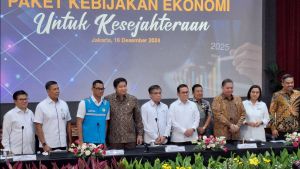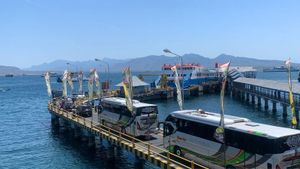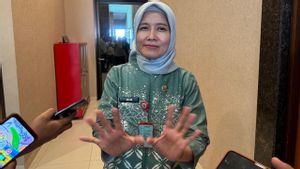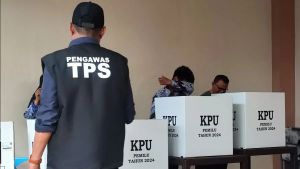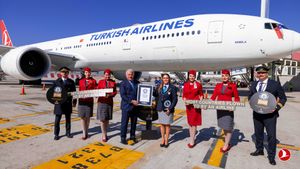JAKARTA - Malaysia has repeatedly insulted the identity of the Indonesian nation. Finally, a video containing a play on the national anthem of Indonesia Raya went viral. The video was allegedly made and uploaded by a citizen from Malaysia. Malaysians need to see the history of how dignified Indonesia is as a nation, when compared to the Malaysian independence process?
The pun was uploaded by the My Asean YouTube channel. The video depicts the background of the Red and White flag accompanied by the Garuda Pancasila emblem. This video is accompanied by a song by someone changing the lyrics of the song Indonesia Raya with lyrics connoting harassment. This video is about one minute long and was uploaded about two weeks ago. Now the video has been takedown on YouTube.
This is not the first time Malaysia has committed harassment against Indonesia. In 2017, for example, Malaysia displayed the Indonesian flag upside down in the 2017 SEA Games guidebook. At that time, Malaysia hosted the event.
It is emblazoned on the 80th page of the manual. As a result of this incident, the Minister of Youth and Sports at that time, Imam Nahrawi, was also angry.
A few months later before the 2018 U-16 AFF Cup, a similar case happened again. Malaysian National Team U-16 footballer Amirul Ashrafiq Hanifah, for no apparent reason put the Indonesian flag upside down. This can be seen from the upload on his personal Instagram Story social media account.
Still in the same year, reportedly the reverse flag incident was carried out by a Malaysian martial arts athlete, Luqman Hakim. Whether on purpose or not, he put the Indonesian flag upside down through his personal Instagram social media account.
In his upload, Luqman put the Malaysian flag over the heads of the neighboring country contingents. Meanwhile, still in the same photo, he put the Indonesian flag upside down over the photo of Indonesian athletes. After his account was protested by many netizens, he immediately apologized.
"I apologize for my mistake. I swear I don't intend to overturn the flag," Luqman said via his Instagram account.
Not only athletes, insults against Indonesia also came from the Malysia tycoons. Last year, the owner of Big Blue taxi company, Datuk Shamsubahrin Ismail, called the Indonesian people poor.
Initially, Shamsubahrin rejected the presence of Gojek online motorcycle taxis in a neighboring country. He reasoned that the rejection was because Malaysia's young population was a rich country, unlike Indonesia which was poorer. This statement is considered to denigrate the profession of driver-partners and Indonesian society as a whole.
"This is a poor country, we are a rich country. If a young Indonesian is good, he doesn't leave, he leaves the country to look for work. Gojek is only for poor people like Jakarta," said Shamsubahrin in his viral video recording.
After being criticized, Shamsubahrin apologized for his remarks. "I apologize for my statement, calling Indonesians poor," he said. "Indonesia is in my heart, the Indonesian people are in my heart."
Seeing the many humiliations that the Malaysians have committed against Indonesia, perhaps they need to be reminded of the national dignity in the historical context, including how the two countries achieved independence. There are fundamental differences in the independence of Indonesia and Malaysia. Indonesian independence was won by struggling to the end. Meanwhile, Malaysia obtained independence from the management of their country from Britain.
Indonesian independenceThe struggle for independence between Indonesia and Malaysia is arguably the opposite of each other. Indonesia's independence was paid for by the bloodshed of its fighters. Not a few stories of heroic heroes who died on the battlefield against the Dutch army.
After Japan was bombarded by the Allies in 1945, Indonesia tried to win its independence. Several major wars occurred during this period. Call it the Battle of Bojong Kokosan on December 9, 1945, the Five Day Battle in Semarang in October 1945, until the major events against the allied forces on the 10 November 1945 Incident.
The climax, as written by H. Kuswandi in his journal entitled The Effect of the Second War of Independence on the Recognition of Indonesian Sovereignty on December 27, 1949 (2015), explains that the Indonesian independence war occurred during the Dutch Military Aggression II in 1948 and the Four Day General Offensive.
During the Four Day General Offensive, the Indonesian National Army fought to seize Dutch positions in Solo City so that they would know that the TNI still had the fangs that they could drive the Dutch away. For this reason, a general attack plan was made against the city of Solo.
During the four days of fighting, at least 109 houses were destroyed, 205 people died because of the Dutch terror action, 7 Dutch soldiers were shot and 3 people were captured while 6 people were killed on the side of the TNI. The minimum number of casualties among the TNI shows the increasing performance of the TNI in carrying out attacks.
The result of this attack was to strengthen the political bargaining position of the Indonesian delegation's diplomatic struggle at the Round Table Conference (KMB), The Hague. So that ended in achieving the Sovereignty of the Republic of Indonesia on December 27, 1949, it could coexist with Independent Indonesia on August 17, 1945.
Independence of MalaysiaIn contrast to Indonesia, Malaysia apparently got its independence very easily. Even the colonial state, Britain, became the initiator of the Malayan Union (Malayan Union) in 1946.
During the British occupation, the government structure was fully controlled by the British authorities. Several political policies had also been carried out by the British authorities in order to seize and control Malaya.
Persatuan Malaya received resistance from the Malay Society organization, the United Malay National Organization (UMNO). This organization strongly opposed the Malayan Unity.
This is because in the Unitary Malaya, citizenship status will be given equally to all foreigners born in Malaya. Another opposing motive is the concern among Malays about immigrants, especially Chinese gologists who want to control the Malayan economy.
As a result, the United Malaya broke up on January 21, 1948. However, Britain's role did not go away. The country helped formulate the founding of the 1948 Malayan Alliance or Federation of Malaya.
In the 1950s UMNO continued to push for independence through the Federation of Malaya. Until finally on 31 August 1957 Britain agreed to give independence to the Federation of Malaya.
The independence of the Malaysian Federation became an important milestone for the formation of the Malaysian Federation on 16 September 1963, which is now celebrated as Malaysia Day every 16 September.
The English, Chinese, Japanese, Arabic, and French versions are automatically generated by the AI. So there may still be inaccuracies in translating, please always see Indonesian as our main language. (system supported by DigitalSiber.id)



